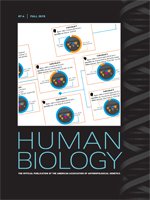Models that examine genetic differences between populations alongside a genotype—phenotype map can provide insight about phenotypic variation among groups. We generalize a simple model of a completely heritable, additive, selectively neutral quantitative trait to examine the relationship between single-locus genetic differentiation and phenotypic differentiation on quantitative traits. In agreement with similar efforts using different models, we show that the expected degree to which two groups differ on a neutral quantitative trait is not strongly affected by the number of genetic loci that influence the trait: neutral trait differences are expected to have a magnitude comparable to the genetic differences at a single neutral locus. We discuss this result with respect to population differences in disease phenotypes, arguing that although neutral genetic differences between populations can contribute to specific differences between populations in health outcomes, systematic patterns of difference that run in the same direction for many genetically independent health conditions are unlikely to be explained by neutral genetic differentiation.
How to translate text using browser tools
1 October 2015
A General Model of the Relationship between the Apportionment of Human Genetic Diversity and the Apportionment of Human Phenotypic Diversity
Michael D. Edge,
Noah A. Rosenberg
ACCESS THE FULL ARTICLE

Human Biology
Vol. 87 • No. 4
October 2015
Vol. 87 • No. 4
October 2015
genetic differentiation
health disparities
population genetics
QUANTITATIVE GENETICS




